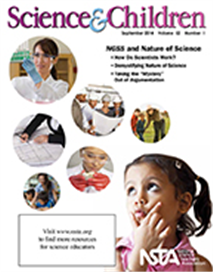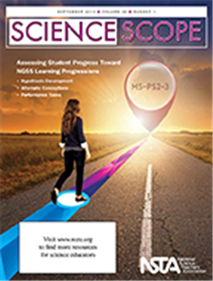All Middle School resources
Journal Article
Science 101: How Do We Use Calculus in Science?
This column provides background science information for elementary teachers. This month’s issue describes the role of calculus in science classes....
Journal Article
Scope on Safety: Safety in Numbers
This column shares safety information for your classroom. This month’s issue discusses how crowded conditions affect instructional effectiveness, lab safety, and teacher liability....
NSTA Kids
Children's Choices Winner, Children's Book Council and International Literacy Association!...
Journal Article
Scope on Safety: Safety's Within Your Grasp
This column shares safety information for your classroom. This month’s issue discusses assessing safety issues during a model's testing phase....
NSTA Press Book
Introducing Teachers and Administrators to the NGSS: A Professional Development Facilitator's Guide
REVERE Award Finalist, PreK-12 Learning Group, Association of American Publishers!If you’re charged with helping educators achieve the vision of the new science standards, this is the professional development resource you need. This book is chock-f...
By Eric Brunsell, Deb M. Kneser, Kevin J. Niemi
Journal Article
Scope on Safety: Safety Requires Collaboration
This column shares safety information for your classroom. This month’s issue covers teachers receiving multidisciplinary safety training....
NSTA Press Book
Using Physical Science Gadgets and Gizmos, Grades 6-8: Phenomenon-Based Learning
What student—or teacher—can resist the chance to experiment with Rocket Launchers, Sound Pipes, Drinking Birds, Dropper Poppers, and more? The 35 experiments in Using Physical Science Gadgets and Gizmos, Grades 6–8, cover topics including press...
By Matthew Bobrowsky, Mikko Korhonen, Jukka Kohtamäki
NSTA Press Book
If you and your students can’t get enough of a good thing, Volume 2 of Uncovering Student Ideas in Physical Science is just what you need. The book offers 39 new formative assessment probes, this time with a focus on electric charge, electric curre...
By Page Keeley, Rand Harrington






